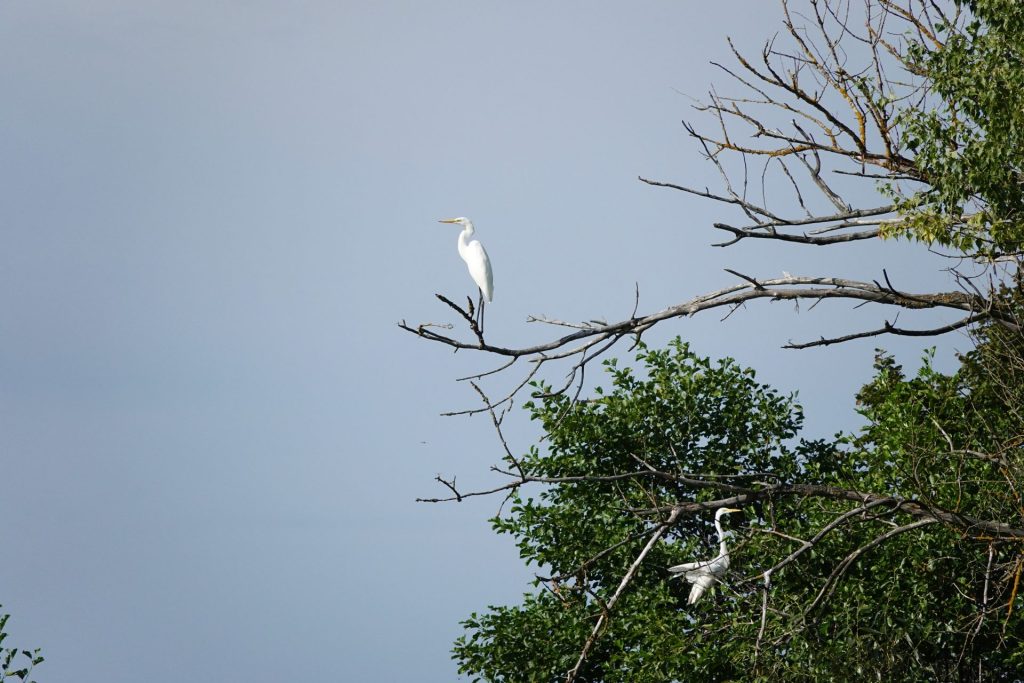FZS team visited Polissia protected areas
At the end of July, our team visited the national nature parks and nature reserves of Polissia to get acquainted with their work and understand the needs of the protected areas.
Michael Brombacher, Head of FZS Europe Department, Elleni Vendras, Project Leader Polissia, Anastasiia Drapaliuk, Protected Areas Reform and Advocacy Coordinator, and our communications team took part in the expedition.
In our work in Polissia, we primarily focus on wetland restoration. Often, this impact has to be comprehensive, as the sites have been affected by various factors, including drainage, mining, fires, river channel changes, installation of hydrological structures, and military operations.
The FZT team aimed to investigate sites for potential restoration, so we visited these locations. In the Nobel National Nature Park, the environmentalists showed traces of amber mining, in the Rivnenskyi and Drevlyanskyi nature reserves we saw melioration channels and damaged hydrological structures, traces of fires, as well as in the ‘Radzivil Pushcha’ National Nature Park. The team discussed with scientists from the Polisskyi and Chornobylskyi reserves the consequences of the destruction of the floodplains of the Zholobnytsia and Uzh rivers, respectively.
In addition to measuring the negative human impact on the nature of Polissia, the expedition participants saw how the PAs manage to cope with a number of challenges:
– for example, garbage collection points have been organized in the Nobel National Nature Park to improve recreational areas;
– an ornithological trail on the water was arranged in the Polissia Nature Reserve for eco-educational purposes, and a summer science house was built in the Drevlianskyi Nature Reserve;
– birdwatching towers were installed in the Prypiat-Stokhid National Nature Park and in the Cheremskyi Nature Reserve;
– Mykhailo Franchuk, a scientist at the Rivnenskyi Reserve, showed the team the nesting sites of the rare Greater Spotted Eagle, and the group saw an ancient natural monument, the Józefin Oak, in the ‘Radzivil Pushcha’ National Nature Park.
The next step is to identify sites for restoration. This work is ongoing.
News










